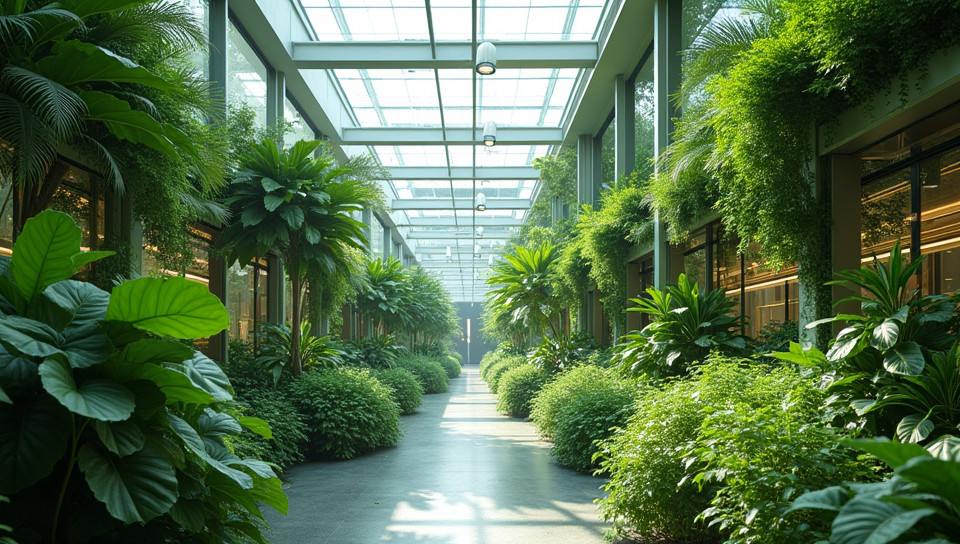Plants thrive in green buildings 72%

Green Buildings: A Haven for Plants and People
As we continue to urbanize, our cities are becoming increasingly concrete jungles. But what if I told you that there's a way to bring the natural world back into our urban spaces? Enter green buildings – structures that not only reduce their carbon footprint but also provide a thriving environment for plants to grow.
What is a Green Building?
A green building is designed and constructed to minimize its impact on the environment. These buildings use sustainable materials, conserve energy and water, and promote indoor air quality. But did you know that green buildings can also support plant life? By incorporating green roofs, walls, and gardens, these structures create microclimates that foster the growth of plants.
Benefits of Plants in Green Buildings
Plants have a profound impact on our well-being, from reducing stress to improving air quality. In green buildings, plants play an even more crucial role:
- Provide insulation and reduce energy costs
- Mitigate urban heat islands
- Improve indoor air quality through photosynthesis and oxygen production
- Support biodiversity by attracting pollinators and other beneficial insects
- Enhance aesthetic appeal and boost occupant morale
Designing for Plant Success
To ensure that plants thrive in green buildings, designers must consider the unique challenges of an urban environment. This includes:
- Selecting drought-tolerant species that can withstand harsh conditions
- Incorporating efficient irrigation systems to conserve water
- Providing adequate sunlight and temperature control
- Using materials that are resistant to pests and diseases
Case Studies: Success Stories in Green Building
From the Amazon Spheres in Seattle, which features over 40,000 plants, to the VanDusen Botanical Garden Visitor Centre in Vancouver, which showcases a stunning living wall – green buildings are pushing the boundaries of sustainable design. These projects demonstrate that with careful planning and execution, even the most unlikely spaces can become oases for plant life.
Conclusion
As we move forward in our quest for sustainability, green buildings will play an increasingly important role. By incorporating plants into these structures, we can not only reduce our environmental impact but also create healthier, more productive environments for ourselves. Whether you're a designer, developer, or simply someone passionate about the great outdoors – it's time to get growing!
- Created by: Rei Saitō
- Created at: Dec. 19, 2024, 12:16 p.m.
- ID: 16787








